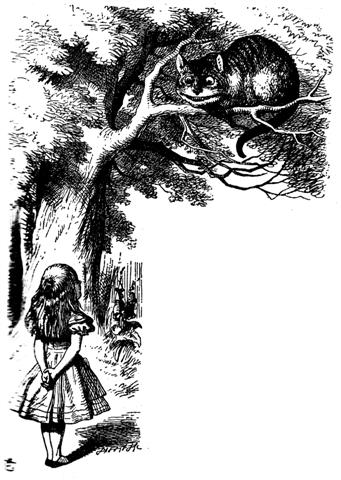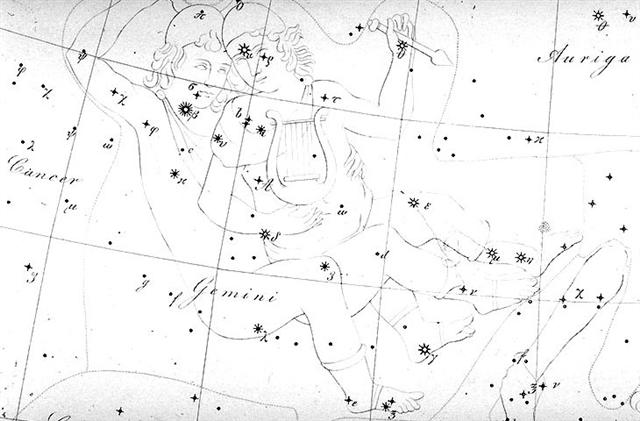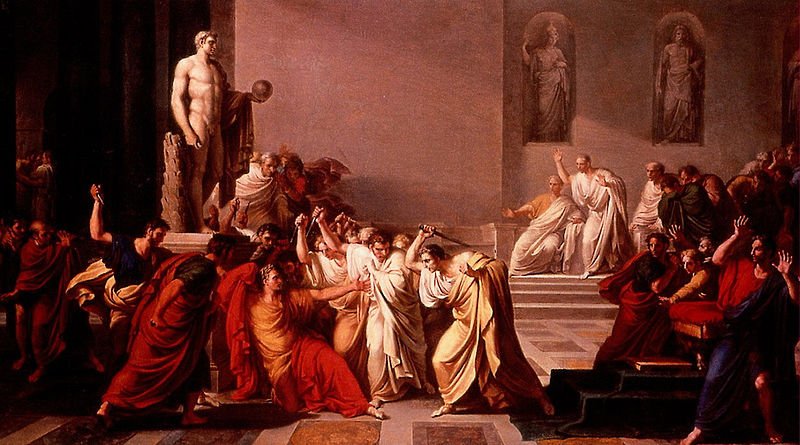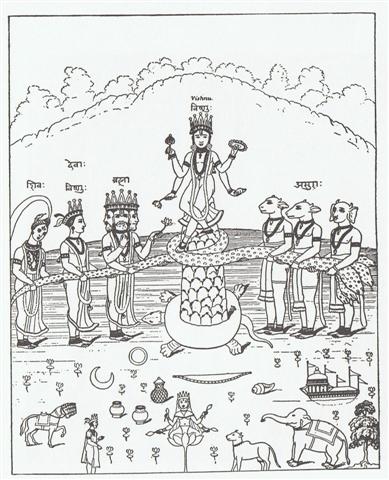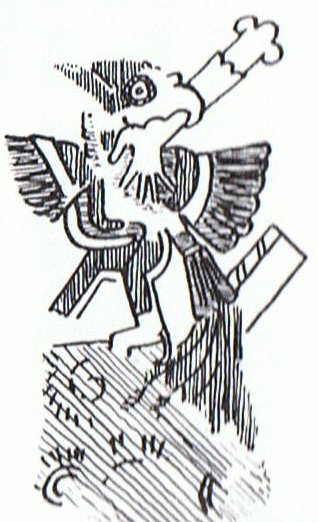Once again. There is another hoea in G which seems to be more related to hoea in Eb6-3 (187), viz. Gb3-30:
There is a certain resemblance between Gb3-27 and Cb4-19:
... And then the bone spoke; it was there in the fork of the tree: Why do you want a mere bone, a round thing in the branches of a tree? said the head of One Hunaphu when it spoke to the maiden. You don't want it, she was told. I do want it, said the maiden. Very well. Stretch out your right hand here, so I can see it, said the bone. Yes, said the maiden. She stretched out her right hand, up there in front of the bone. And then the bone spit out its saliva, which landed squarely in the hand of the maiden. And then she looked in her hand, she inspected it right away, but the bone's saliva wasn't in her hand. It is just a sign I have given you, my saliva, my spittle. This, my head, has nothing on it - just bone, nothing of meat. It's just the same with the head of a great lord: it's just the flesh that makes his face look good. And when he dies, people get frightened by his bones. After that, his son is like his saliva, his spittle, in his being, whether it be the son of a lord or the son of a craftsman, an orator. The father does not disappear, but goes on being fulfilled. Neither dimmed nor destroyed is the face of a lord, a warrior, craftsman, an orator. Rather, he will leave his daughters and sons. So it is that I have done likewise through you. Now go up there on the face of the earth; you will not die. Keep the word. So be it, said the head of One and Seven Hunaphu - they were of one mind when they did it ...
Notably heliacal Adhil (ξ Andromedae at the train of her garment) came 264 days (glyphs) later than heliacal ω Cancri at Ga2-26, although the nakshatra star Adhil in glyph 384 in the C text came 84 glyphs (nights) later than hoea in Cb4-20 (300):
84 + 183 = 267 = 264 + 3. Altair came 3 nights earlier than τ Aquilae. At the time of the Bull MAY 16 (136) at Ga2-26 was the position of the first Greek lettered star (ω) in Cancer.
... By repeating a charm, she opened the two shells and slipped inside. She could see nothing, because the sun and the moon did not then exist; and then, she could not stand up because there was not enough room in the shellfish. Constantly hunting about she at last found a snail. To endow it with power she placed it under her arm, lay down and slept for three days. Then she let it free, and still hunting about she found another snail bigger than the first one, and treated it in the same way. Then she said to the first snail: 'Can you open this room a little, so that we can sit down?' The snail said it could, and opened the shell a little ...
May 16 (at the time of rongorongo) was when Alcyone in the Pleiades rose with the Sun and in a way the role of ω Cancri for indicating the beginning of high summer had been taken over by Alcyone. Adhil in Andromeda had a role more of marking the end of winter (in early FEBRUARY) than the beginning of summer. 
... At the beginning of 44 BC - when Ceasar was still alive - the Senate decided to raise statues of him in all the temples and to sacrifice to him on his birthday in the month Quintilis, which in honour of him was renamed July. He was raised to the status of a god (among the other gods of the state) under the name Jupiter Julius. Marcus Antonius, who this year was consul together with Ceasar, became high priest and responsible for the ceremonies. In the middle of February, at the time of the old feast of Lupercalia, he ran around naked ... and whipped the Roman ladies with thongs made from goat-skin ...
But due to the precession FEBRUARY 4 (400) had changed into April 9 (464).
The front of hoea in Gb3-30 is drawn down as if to not yet allow the Sun rays to enter. A drawn down front does also characterize hoea in Eb6-3:
61 * 3 = 183. Possibly, though, we should add 1 (for the day of origin) to the glyph number and then read 188 (= 183 + 5). 532 (Eb5-31) = 184 (Eb6-13) + 12 * 29 (= 348) = 2 * 266 = 76 weeks. 1 + 18 * 29½ = 1 + 61 * 3 + 12 * 29. The figure in Eb6-13 has turned his head away from en face to looking ahead.
... I had decided to look up in what month Caesar was stabbed by Brutus, it just couldn't be July, I thought. My intuition said it should be at the other end of the single-cycle year, at the close of the year. Caesar represented human order and Brutus the 'brutal' chaotic forces which were so strong in spring. I was too lazy to search for Gibbons. Instead a quick look in Wikipedia was immediately rewarding. He was killed in the 'ides of March' (= March 15). And of course, Brutus was not alone - he had a bunch of companion brutes ...
Caesar was forewarned of the threat by the prophet Spurinna, who told him that a great threat was coming at Idus Martiae or just before. The day arrived and Caesar was still living, walking to his meeting with the Senate when he happened to encounter Spurinna and told him jokingly that he was still alive. Spurinna calmely answered that the day had yet not ended ... The chaotic tumult in the Curia (where the Senate had their meeting and where they killed Caesar) resulted in his dead body left lying on the floor, while all the Senators panicked and ran out through the doors in different directions. They had planned to throw his body into the river, but the time of plans and order was in the past. Instead, in the afternoon, three of the slaves of Caesar came and fetched his body, and carried him on a stretcher to his home south of Forum - and one arm was hanging down in the corner where the 4th slave should have been ...
I suggest the glyph type ihe tau was a sign for the point in time of the 'knife'. In Eb6-9 the knife is reversed. The opposite of Knife was Life.
... A man once said to his careless son: The world is as sharp as a knife. If you don't watch out, you'll fall right off. His son replied that the earth was wide and flat; no one could fall off. And as he kicked at the ground to show how solid and reliable it was, he ran a splinter into his foot and died soon after ... (Robert Bringhurst, A Story as Sharp as a Knife. The Classical Haida Mythtellers and Their World.) |
||||||||||||||||||||||||||||||||||||||||||||||||||||||||||||||||||||||||||||||||||||||||||||||||||||||||||||||||||||||||||||||||||||||||||||||||||||||||||||||||||||||||||||||||||||||||||||||||||||||||||||||||||||||||||||||||||||||||||||||||||||||||||||||||||||||||||||||






